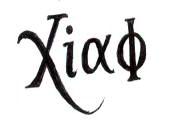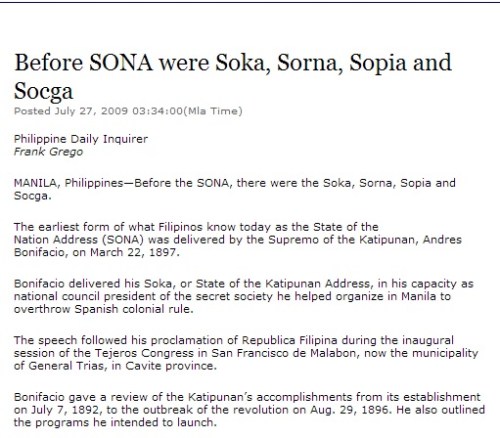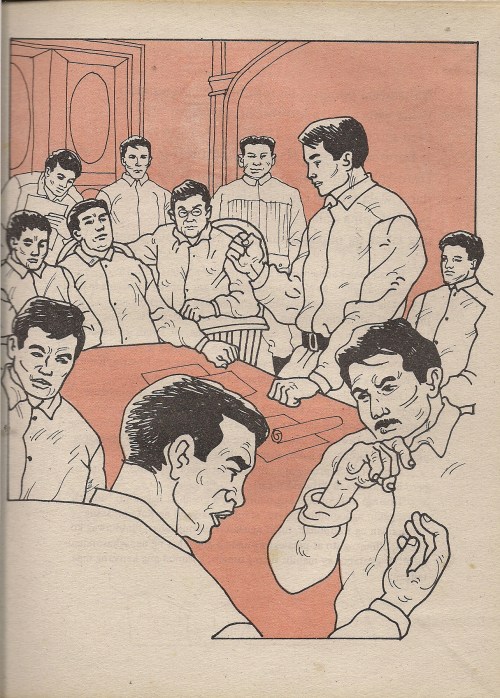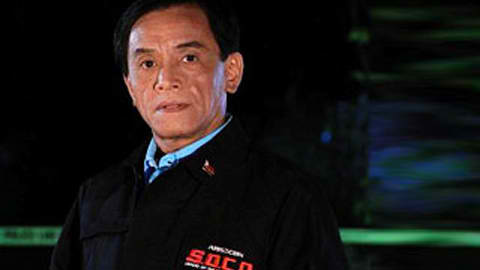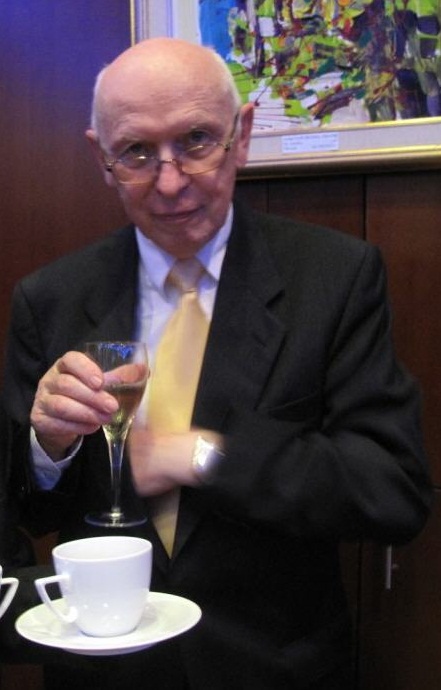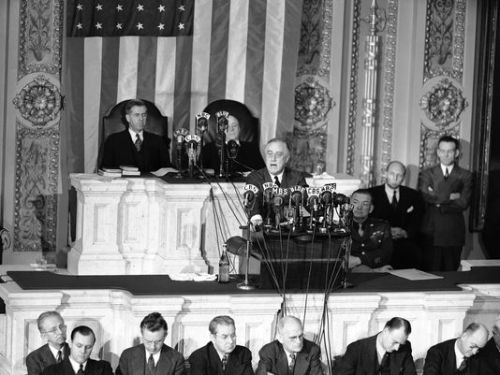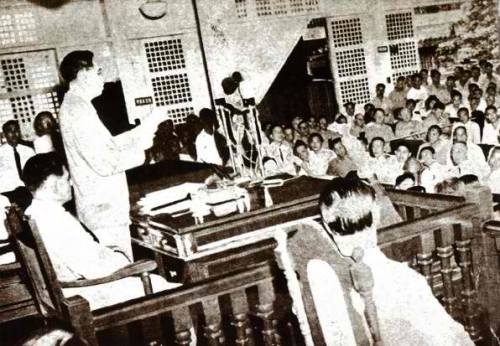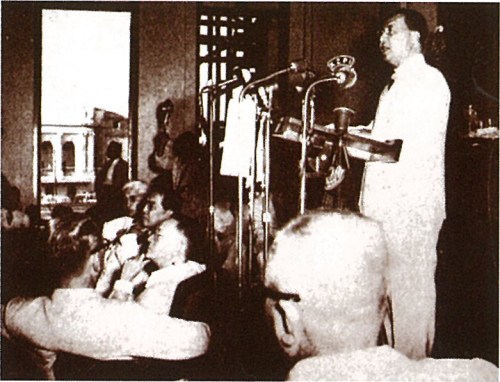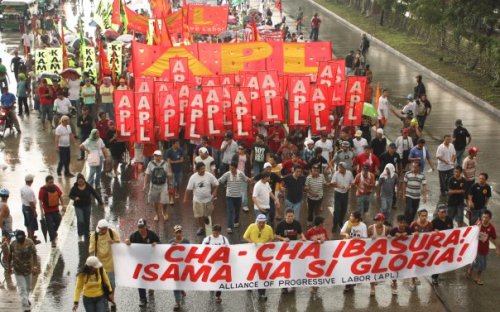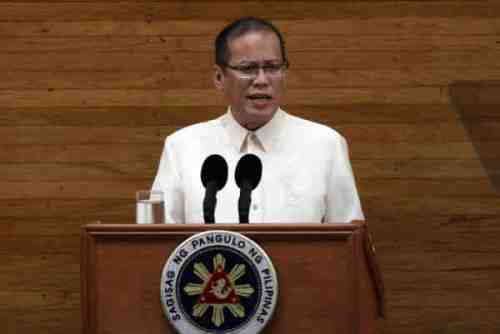BEYOND TRIVIA: The “Saysay” of the SONA
by xiaochua
On the occasion of the fourth State of the Nation Address of President Benigno S. Aquino, III, I am reposting one of my columns, “Walking History,” that I made for the short-lived newspaper “Good Morning Philippines,” 25 July 2011, p. 8. Special thanks to my editor Ms. Rita Gadi:
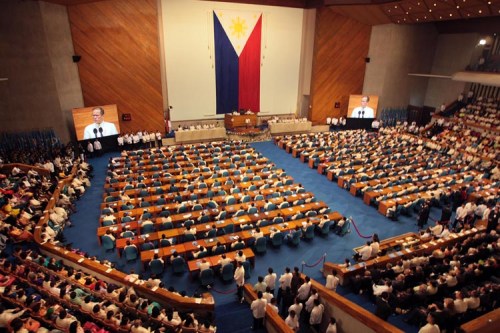
The Congress during the State of the Nation Address of President Benigno Aquino, III. From Malacanang.gov.ph.
XIAO TIME, 19 July 2013: KASAYSAYAN NG STATE OF THE NATION ADDRESS
It’s SONA time once again! And as a historian I am expected to give a SONA trivia.
A leading broadsheet published a short piece on the precursors of the State of the Nation Address (SONA) in 2009 saying that what is now known today as the State of the Katipunan (SOKA) address was supposedly delivered by the President of what must be considered as the First Filipino National Government, Andres Bonifacio, at the Tejeros Convention on 22 March 1897. This was picked up by some magazines and also by Wikipedia and published it as trivia: the first manifestation of the SONA.
First, among historical circles, there was no such thing as the SOKA. Aside from the funny connotation of the acronym that seems to be a joke, even sounding like a Gus Abelgas TV show, I checked the primary sources written by Artemio Ricarte and Santiago Alvarez and secondary sources crafted by Teodoro Agoncillo and Adrian Cristobal on the Tejeros Convention and found no mention of Bonifacio delivering a speech reviewing the accomplishments of his government from the establishment of the Kataastaasang Kagalang-galangang Katipunan ng mga Anak ng Bayan on 7 July 1892, to the outbreak of the revolution on August 1896. He supposedly also outlined the programs that he intended to launch.
What was mentioned was a debate by the delegates and Bonifacio on the proposed replacement of the Katipunan revolutionary government with a more Western type government, to which Bonifacio conceded for as long as the decision of the majority will be respected. His adherence to the democratic principles led to his replacement in an election that was rumored to be rigged from the start, and then a power struggle that ended to his and his brother Procopio’s execution in the hands of his own men.
More than trivia, this was the painful start of the Filipino Nation. As always according to historian Dr. Zeus Salazar, it was a clash of the mentality of the elites and the bayan. Bonifacio envisioned a country, Inang Bayan, based on Kapatiran of everyone, the elite and the bayan. We are all Anak ng Bayan, and that Kalayaan can only be attained if there’s kaginhawaan and mabuting asal. The elite did not totally accept this, wanting to adapt a different concept that they learned from Western schools: The concept of Nación—republican democracy based on rights guaranteed by a written constitution, with emphasis on political freedom and power. With the power struggle which characterized the birth of the nation, kapatiran lost to Western emphasis on power. And since then, elite democracy became the order of the day in this country.
Since this concept of nation had no cultural basis, therefore it is, as Benedict Anderson puts it, an “imagined community,” the state needs symbols and rituals to bind the different peoples in the Philippines to this “imagined” nation. Polish academic Krzysztof Gawlikowski likened the nation to a mythical being. The nation is like a religion. Like all Catholics can identify with the cross, we feel like we’re one country when we sing the national anthem and rally around one flag.
In our annual life as a nation, the State of the Nation Address is a very important ritual. More than just watching for the wardrobe of the president and more new wardrobes from lady congressmen and socialites, or what new gimmicks or slogans will be employed to add to SONA’s entertainment value, this is the time of the year when the whole Filipino people, both the elite and the masses, listen intently to the president, the high priest of the nation, preside in the opening of congress and outline his achievements and plans. For a time, admin fans and opposition are one in reflecting on the state of our nation, as ONE NATION.
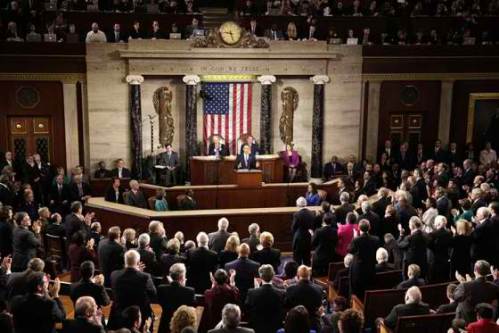
The Joint Session of Congress listening to Barack Obama’s State of the Union Address. From whitehouse.gov.
The term “State of the Nation” was borrowed from “The State of the Union,” the report of the American President to his Congress. On 16 June 1936, Commonwealth President Manuel Luis Quezon copied the practice and delivered “On The Country’s Conditions and Problems” to his congress. But the precursor of what we now call “Ulat sa Bayan,” a more direct address to the people on the achievements of the Commonwealth government, was the much awaited address of President Quezon during the anniversaries of the establishment of the Philippine Commonwealth every 15 November. In an earlier research, I found out that people gather around radio sets and listen to Quezon’s speeches which reflected the optimism of the early years, the hard realities of self governance and finally, the fears of the coming World War. Quezon’s non-appearance to deliver his speech in 1938 also reflected the failing health of the president.
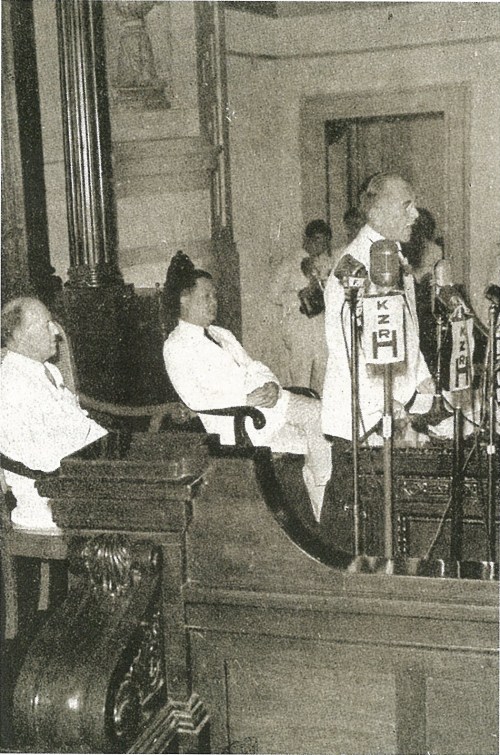
Fom gov.ph: President Manuel L. Quezon delivers his 1940 message to the National Assembly in front of its Speaker Jose Yulo and United States High Commissioner Francis B. Sayre.

Commonwealth Day in new Quezon City, November 15, 1940. From the Manila Bulletin microfilm of the University of the Philippines Main Library.

Commonwealth Day in new Quezon City, November 15, 1940.From the Manila Bulletin microfilm of the University of the Philippines Main Library.
After the Americans returned our independence, President Manuel Roxas delivered to the first congress his “Message on the State of the Nation” on 27 January 1947. According to presidential historian Manolo Quezon, this started the practice of the president’s message being called “State of the Nation” and being delivered January of every year until President Marcos declared Martial Law in 1972. On 23 January 1950, with President Elpidio Quirino delivering his second speech to congress entitled “Address on the State of the Nation,” historian Quezon said that the SONA as we know it today “can be said to have firmly been established.”
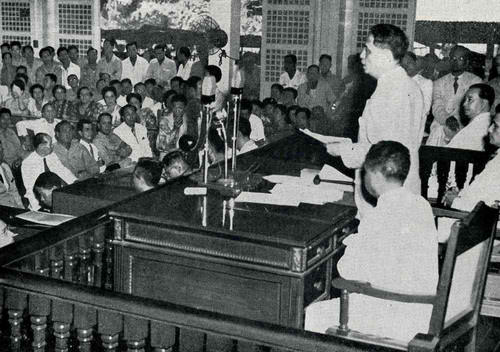
From tumblr.malacanang.gov.ph: President Manuel Roxas, as he delivers his first State of the Nation Address, on June 3, 1946.

Xiao Chua with Undersecretary Manuel”Manolo” Quezon, III, 2005. From the Archives of the Xiao Chua Library.
The SONA on 26 January 1970 was one for the books. It was opened by Fr. Pacifico Ortiz, S.J. who prayed for a nation at the brink of a revolution. Outside the Old Congress Building at P. Burgos St. were hundreds of restless student demonstrators who, when President Fetrdinand Marcos and his wife Imelda went out of the steps of congress, threw stones at the first couple. Fabian Ver, their bodyguard showed supreme loyalty by covering them. The battle between the police and the students continued to the night and for months to come. This was one of the highlights of the First Quarter Storm, and also the beginning of the tale of two SONAs: The official SONA, and what we now call the “SONA ng Bayan,” a demonstration to represent the supposed real sorry state of the nation.

Ang tinatayang 50,000 sa labas ng Kongreso, hinihintay si Pangulong Marcos na lumabas. Mula kay Susan Quimpo.
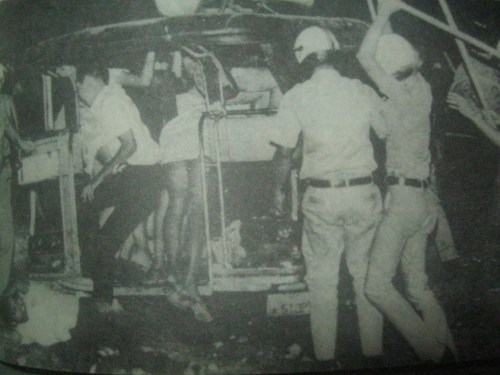
Ang mga binti ni Prop. Judy Taguiwalo at patuloy na hinampas ng mga awtoridad. Mula sa Militant But Groovy.
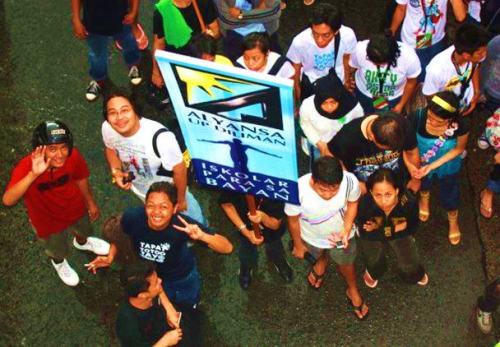
Xiao Chua with UP ALYANSA, participating during the protests for the last SONA of President Gloria Macapagal-Arroyo, 2009. Photo by Marlon Cornelio.
The first SONA of President Benigno Aquino III last year was historic because, among other things, for the first time, some brilliant guy in his administration had a common sense realization that the SONA is not some speech intended for the diplomatic corps or CNN, but for the Filipino people. Not even during the time of President Joseph Estrada when he used Taglish in his SONA, PNoy chose to speak almost entirely in the national language.
At last, after years of SONAs being delivered only to a Congress representing an elite democracy who can understand English, PNoy included the bayan as part of this important ritual of nationhood, wherein the real goal of it must be to finally lessen the gap between the haves and the have nots. It was just a first step, a gesture, but a good first step nonetheless. Now start playing the presidential march, “We say mabuhay…!” It’s SONA time once again!
21 July 2011
